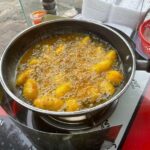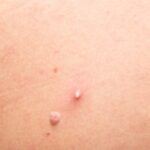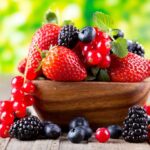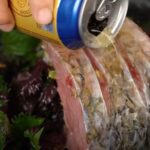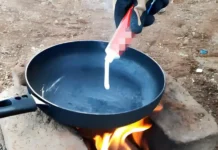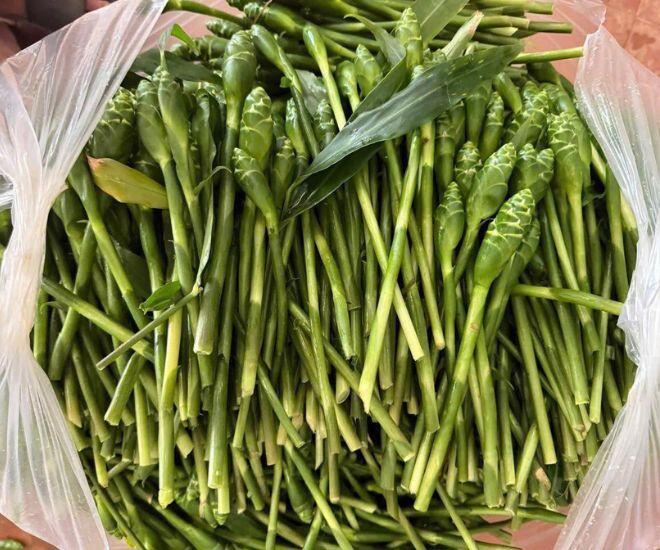
Every year, from August to October, online marketplaces buzz with activity as traders and buyers exchange ginger flower buds. This brief harvest season, lasting only about two months, occurs in the northern mountainous regions and North Central Coast of Vietnam. For highland communities, this is the “golden season”—a once-a-year opportunity where yields depend on weather conditions and the efforts of local harvesters.
Ginger flower buds, also known as wild ginger flowers, grow naturally in forests or long-standing ginger fields. Harvesters typically start early in the morning, when dew still clings to the leaves, using small knives to carefully cut the buds near the base without damaging the root. They then remove the outer sheaths, strip the fibrous stems, and wash the buds for sale or immediate processing.

These delicate buds, about the size of a thumb, have stems measuring 10–15 cm in length and a deep green color. Unfamiliar eyes might mistake them for young bamboo shoots or asparagus. Once the outer layer is peeled away, a subtle ginger aroma is released—both familiar and distinct from common ginger roots. Highland residents prefer harvesting young, unopened buds for cooking. Once the flowers bloom, they become fibrous and lose their flavor. A healthy ginger plant can yield 8 to 10 buds, enough for a special family meal in the highlands.
Traditionally, ginger flowers were a simple side dish in highland meals. Some households boiled them, while others stir-fried them with wild meat to add variety and warmth during chilly, rainy days. In certain areas, the buds were also used medicinally, dried to make tea for treating colds.
In recent years, however, as tourists began exploring the highlands, ginger flower buds found their way onto local restaurant menus. Curiosity from lowland visitors propelled this forest flower to fame, and it quickly made its way to urban areas. In Hanoi, the buds are sold for 50,000 to 70,000 VND per kilogram, sometimes becoming scarce due to limited supply.
Vendors report selling several hundred kilograms daily during peak season. After deducting transportation and preservation costs, they can still profit 1.5–2 million VND per day—a significant income for a forest product.

On cooking forums, ginger flower dishes are gaining popularity: the buds can be boiled, stir-fried with beef, seafood, or chicken, or even cooked with pork cracklings. They are also used in soups, stews, and dried for tea—a healthy beverage with a spicy, warming effect that aids digestion and relieves colds.
However, preparing ginger flower buds is not straightforward. Many note that only the buds are edible, while the stems are too fibrous to consume. The preparation process is time-consuming and labor-intensive. The strong, pungent ginger aroma during cooking can be off-putting to those unaccustomed to it. Some describe the experience as “chewing straw,” due to the fibrous texture and intense flavor.

Some diners admit that ginger flower buds can be challenging to enjoy if not accustomed to them, recommending moderate use to enhance flavor without overwhelming the palate. Sellers advise choosing young, freshly harvested buds to avoid fibrous older ones.
Beyond culinary uses, ginger flower buds are valued as a natural remedy. Dried buds can be steeped for tea to warm the stomach, alleviate colds, and aid digestion. Fresh buds are also used as decorative flowers, their subtle fragrance creating a soothing ambiance.

The rapid rise of ginger flower buds in the market highlights the appeal of highland products when marketed effectively. In just a few seasons, this humble ingredient has become a sought-after delicacy among urban food enthusiasts. Culinary groups on social media frequently share recipes and menu ideas featuring the buds, driving demand each season.
Yet, alongside its allure, many buyers share tales of disappointment: the tedious preparation, strong aroma, and fibrous texture can make it a challenging dish to enjoy. Some humorously liken eating ginger flowers to “chewing straw”—laborious with an acquired taste.
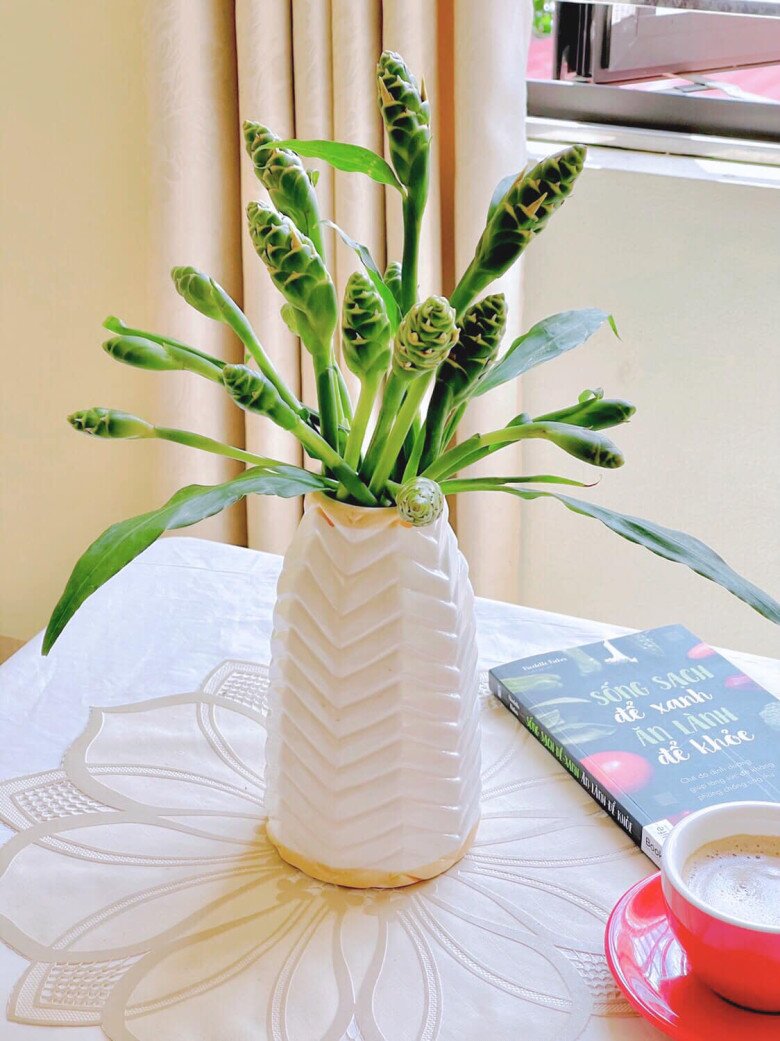
This contrast only adds to the allure of ginger flower buds. For some, they are a unique gift from the mountains; for others, a test of culinary courage. Either way, their presence in urban menus reflects a growing trend in gastronomy: a return to authentic, natural, and local flavors.
Currently, most ginger flower buds are harvested from the wild, with no large-scale cultivation. This makes yields entirely dependent on weather and manual labor. With better organization—from harvesting and processing to packaging and distribution—ginger flower buds could become a sustainable specialty product, providing stable income for highland communities.
Effective and Quick Tips to Treat Whiteheads
Whiteheads are a common type of acne that occurs when dead skin cells, oil, and bacteria become trapped within a pore, creating a small, white bump on the skin’s surface. Unlike blackheads, whiteheads are closed comedones, meaning the pore is completely blocked, preventing oxidation of the trapped sebum. Understanding their formation is key to effective treatment and prevention.
Unlock Radiant Skin: The Ultimate Coffee Powder Whitening Secret
Have you ever pampered your skin with fresh milk, aloe vera, or tomatoes? If so, you’re already on the path to radiant, healthy skin. But have you explored the transformative power of these natural ingredients to their fullest potential? Elevate your skincare routine and unlock a glowing complexion like never before.
4 Simple Ways to Heal Cracked Heels
Revised Introduction:
Cracked heels, a common yet bothersome issue, often stem from overlooked factors. Poor dietary habits, such as insufficient intake of essential nutrients like vitamins and omega-3 fatty acids, can weaken skin elasticity. Prolonged standing, especially on hard surfaces, and improper footwear exacerbate dryness, leading to fissures. Environmental elements, including dry climates and harsh soaps, strip moisture, further aggravating the condition. Neglecting foot care routines and pre-existing conditions like eczema or diabetes also contribute significantly. Addressing these root causes is key to restoring smooth, healthy heels.

























